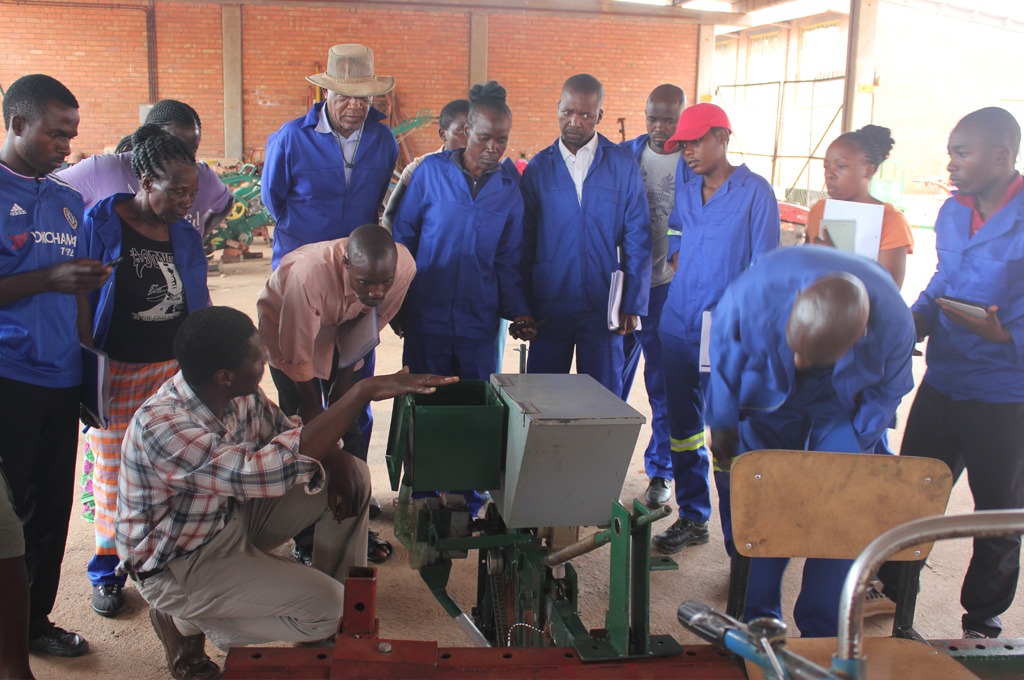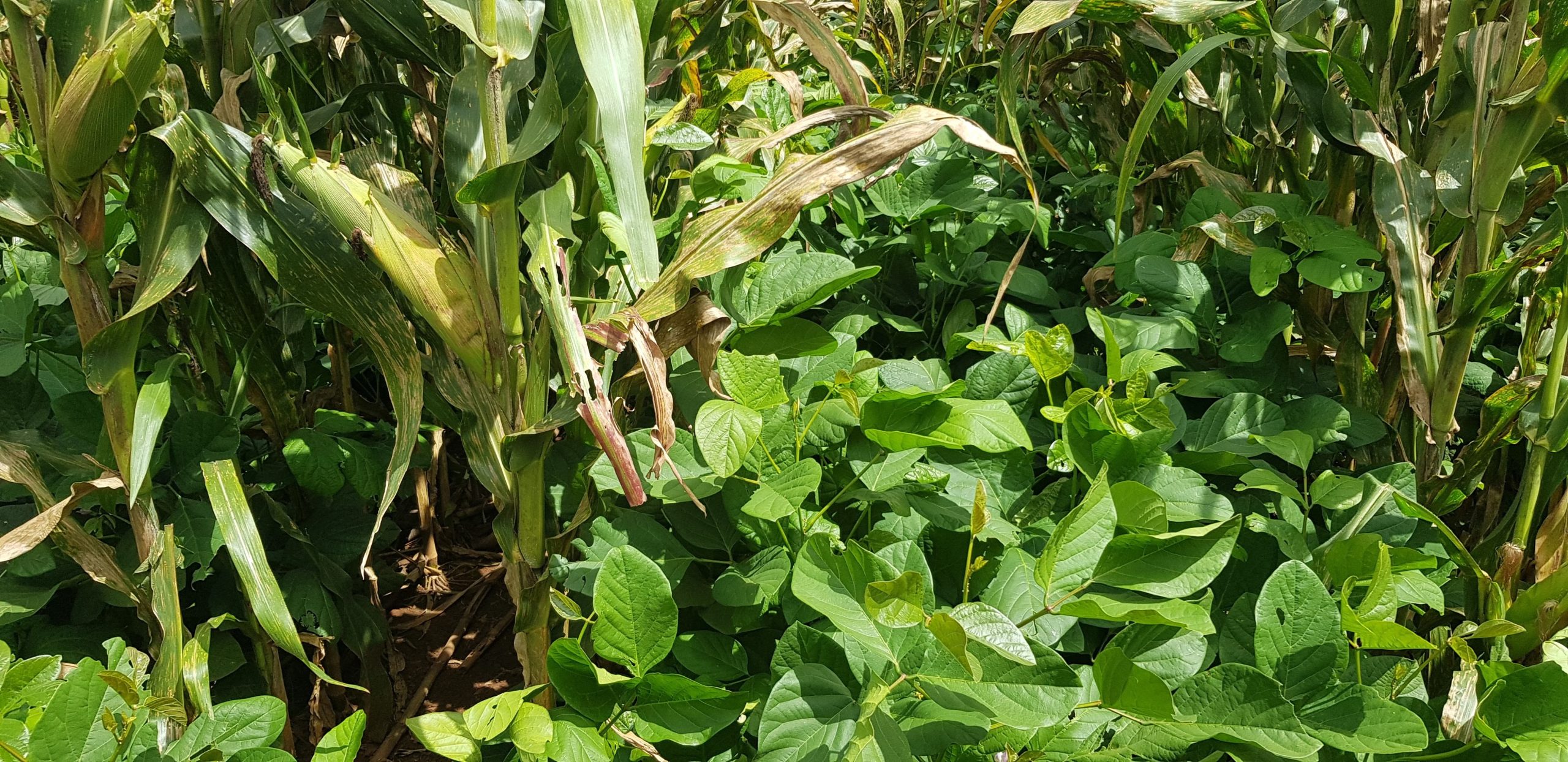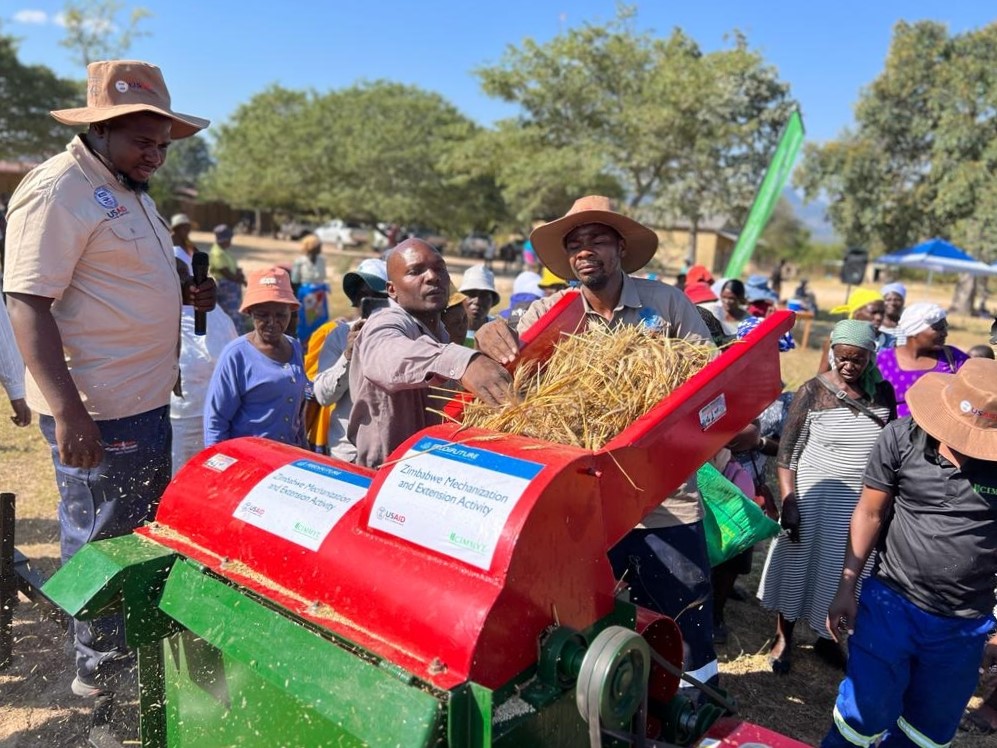
In Zimbabwe, the traditional, laborious, and time-consuming small grain processing may soon belong to the past, thanks to a game-changing technology: a multi-crop thresher. This scale-appropriate machine offers a smarter and less strenuous way to produce high-quality small-grain meals, including in drought-prone regions, without being contaminated with sand or stone particles.
“One of the main impediments to large-scale adoption of sorghum and millet in drought-prone areas is the laborious task of threshing. This has been solved by introducing multi-crop threshers, which form a central part in the business of mechanization service providers in rural Zimbabwe”, says Christian Thierfelder, principal scientist and project lead for the Mechanization and Extension Activity.
The introduction of the multi-crop thresher not only alleviates the physical strain of manual threshing but also enhances the overall quality of small-grain products. This innovation is a crucial step forward in promoting the production and consumption of small grains in Zimbabwe, contributing to food security and improved livelihoods for farmers.
This innovation was introduced by the Feed the Future Mechanization and Extension Activity, implemented by CIMMYT and funded by the United States Agency for International Development (USAID), to address the challenges of traditional small grain processing and offer new market opportunities to farmers.
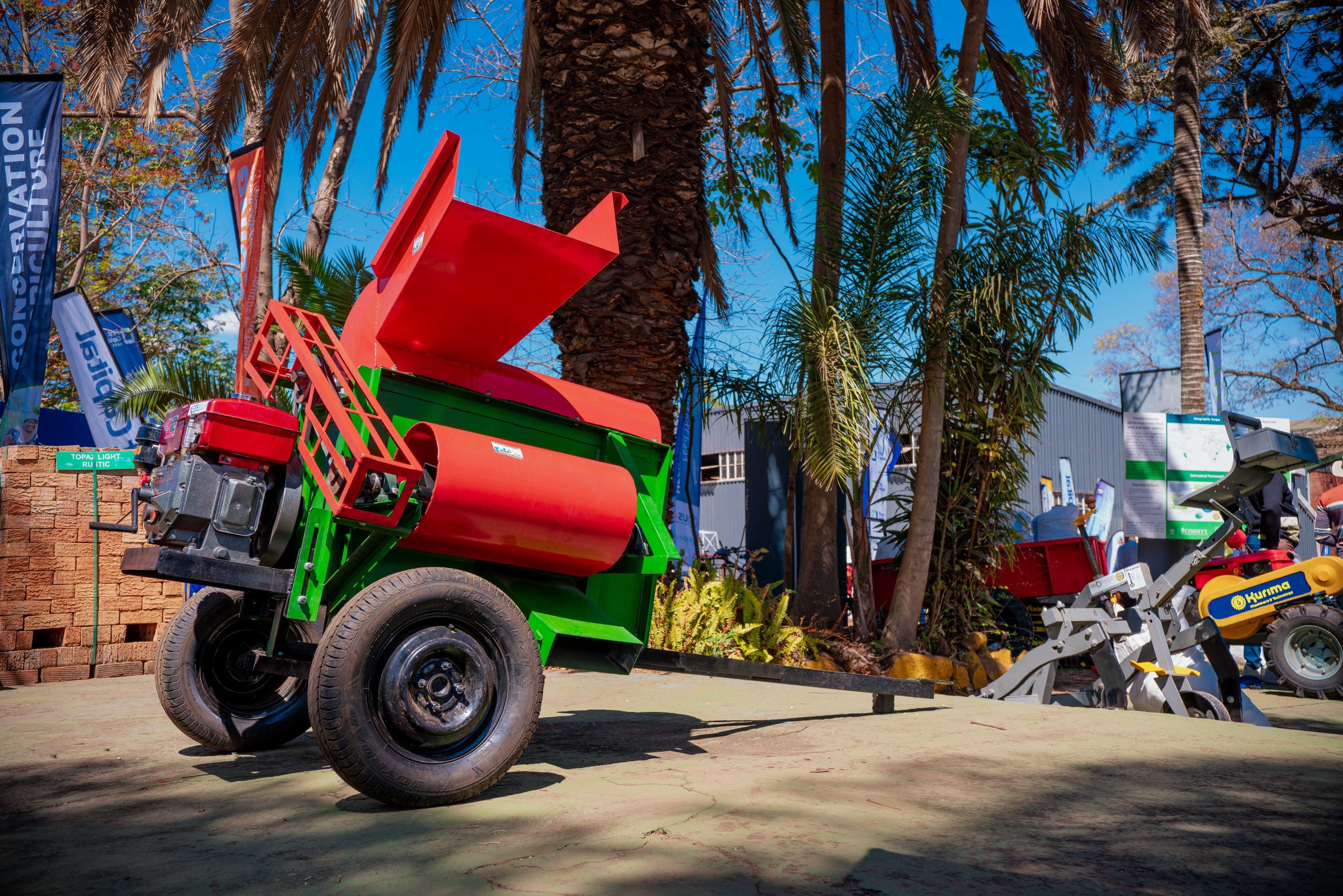
Small grain production and consumption has traditionally been a household favorite in Zimbabwe due to its rich nutritional content. However, the sand content and gritty texture, often associated with sorghum or millet meals, have led to a decline in consumers’ interest in it. The main culprit? The traditional method of manual threshing on the soil, a strenuous and time-consuming process that incorporates sand and gravel particles into the threshed grains (and then into flours), resulting in an unpleasant eating experience.
In Zimbabwe and across the region, small grain processing has been characterized by the arduous task of manual threshing using sticks. Women, often at the forefront of this task, repeatedly beat the heads of small grains on hard surfaces, such as granite or hard clay, to separate the grains. Despite efforts to minimize contamination by threshing them into sacks or on plastic sheets, the gritty taste persists. The subsequent winnowing, roasting, and milling do little to eliminate tiny soil and stone particles from the final product (flour) as physical separation is technically challenging.
The multi-crop thresher for smooth results
“Powered by an 8 HP diesel engine, the multi-crop thresher is a perfect machine to process sorghum, millets, maize (husked or un-husked), wheat, cowpea, sugar beans, and soybean,” says Abdul Matin, mechanization specialist and technical lead of the Mechanization and Extension Activity. “It is locally made in Zimbabwe and designed to promote mechanization as a business as it can easily be transported. It has high threshing efficiency, is fuel-efficient, easy to operate, and women friendly.”
The operator simply feeds the crop into the inlet hopper, and as it passes through the threshing drum, the machine efficiently separates the grain from the chaff, releasing clean grain through the outlet chute. “The thresher will help reduce decline of small grain production in the country and complement government efforts to expand its cultivation in Natural Regions IV and V in Zimbabwe,” Matin added. When operating the machine efficiently, one can thresh up to 0.5 tons per hour for small grains.
The multi-crop thresher, a vital component of climate-resilient agriculture
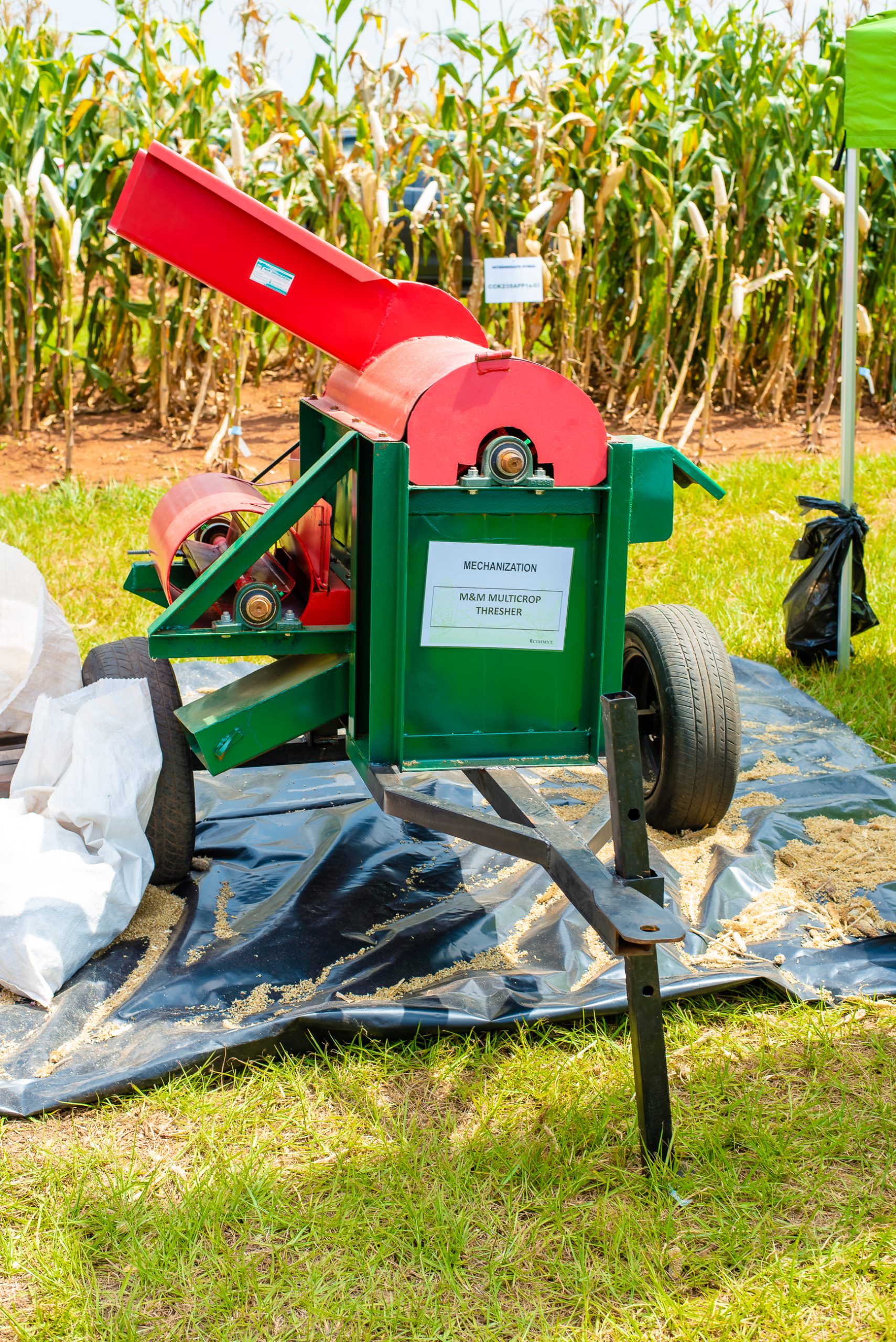
CIMMYT organized awareness meetings, including the 2023 Seed and Mechanization Fairs, for farmers to witness the speed and quality performance of the multi-crop thresher. They could also assess the quality of pearl millet processed using the thresher and others threshing wheat in an irrigation scheme showcasing the efficiency of the process and improved grain quality.
“In our region, harvesting small grains was always laborious,” explains Paidamoyo Kaseke from Ward 4 in Chimanimani district, Manicaland province. “But thanks to the multi-crop thresher, it’s now much easier. It operates quickly and efficiently, delivering clean grains that we can promptly take to the mill. This technology has revolutionized our harvesting process, significantly reducing the time and effort required.”
“Not only do we promote new and effective technologies such as the multi-crop thresher in the project, but we also seek solutions for farmers without high incomes to be able to afford the thresher. That is why we are partnering with two Zimbabwean banks to make small-scale loans accessible to farmers at affordable rates and tenure times. This way, we can effectively scale the access to scale-appropriate mechanization solutions.” says Leon Jamann, chief of party for the Mechanization and Extension Activity.
As the 2023-2024 farming season has been dry with erratic rainfall, rainfed dependent farmers already face drought in large areas of Zimbabwe. However, the promotion of more climate-resilient small grains in 2023—declared by the United Nations the International Year of Millets—emphasizes their adaptability to climate change and their high nutritional value. The multi-crop thresher, a vital component of this initiative, ensures that farmers can efficiently process small grains despite the challenging climate conditions.
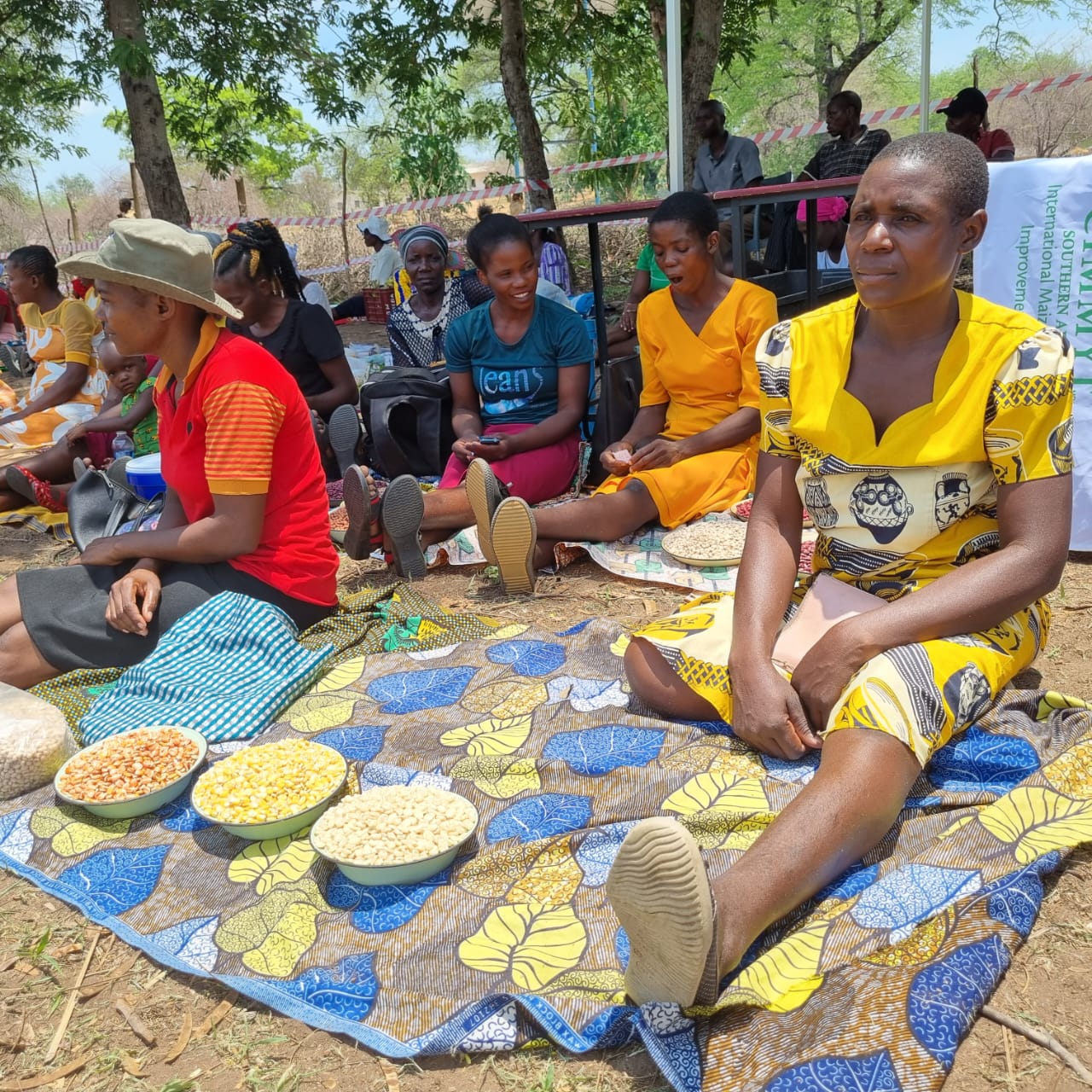
 Capacity development
Capacity development 